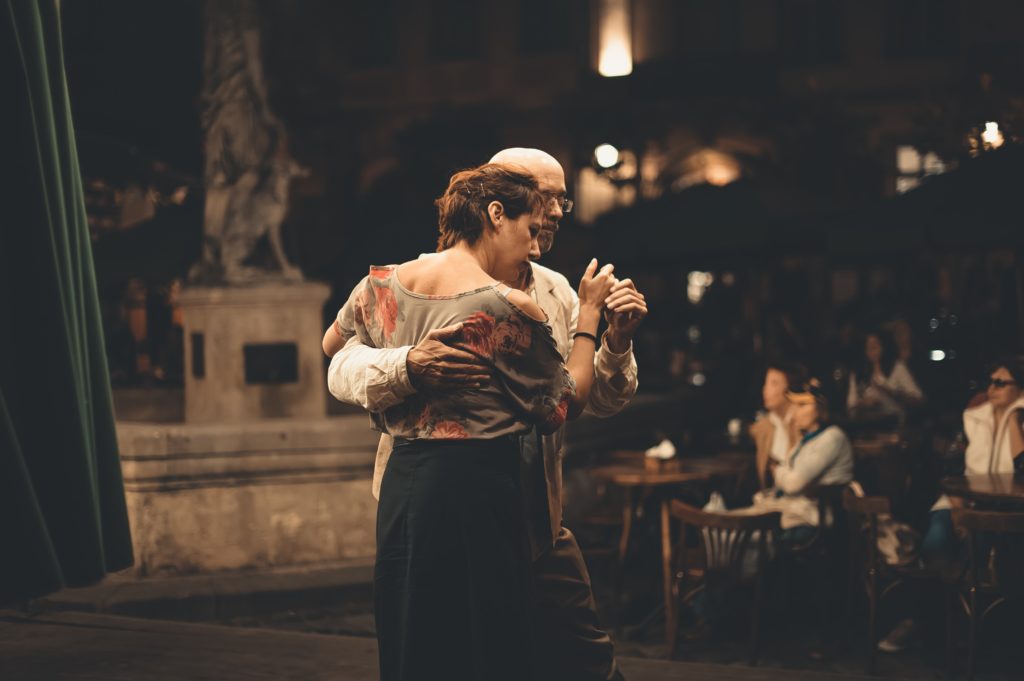One’s Life Can Be a Vehicle for Blessing

I’ve been turning my attention this month to the parami of Patience, using Ajahn Sucitto’s “Parami: Ways to Cross Life’s Floods,” for inspiration. Here’s a quote that surprised and energized me (emphasis mine):
“…It is patience, if cultivated thoroughly and insightfully, that penetrates our will to do, or intention (cetana). Intention is the mental activation that seeks, wavers and tightens… Intention directs one’s attention and interest in a particular way, so corresponding concerns and aims come to mind, and sometimes speech or bodily action follows. And this is what our ‘world’ is made of.
“…The world stops, or rather doesn’t get created, when that process of seeking, wavering and tightening stops. Transcendence, or crossing over, finally means that the movement of mind, which tries to circumvent, forget, defeat, stop, divert, allay or placate — stops. In that stopping, the very conditions that appear to confront us evaporate. And through knowing that, one is unafraid of conditions; one does not hanker after them and one is not intimidated by them.
“Patience is a big part of that. With patience, instead of trying to wriggle out of suffering, one learns to be still and to release the mind from its willfulness and possessiveness…
“And you can even feel respect for the ungrateful and the exasperating. They help you to wear out your addiction to self-view, to having your own way. And they help you to lose your fascination or irritation with the personalities of other people, and all that which is just kamma and no real self at all. Then you say ‘Thank you’ to pointless situations and people who irritate you.
“This is the perfection of patience: it can make one’s life a vehicle for blessing.”
***
Photo by Greg & Lois Nunes on Unsplash
Tuesday Night Insight now on Zoom

A lot has changed since I left at the end of February for six weeks of retreat and training (more than half of which ended up being held on Zoom)!
But what DIDN’T change was the need for connection, kindness, and mutual support. So I hope you will join me, Jan Rosamond, as I lead Tuesday Night Insight — now on Zoom — every Tuesday 7:00 to 8:30 pm.
*** Email me here for the Zoom link to Tuesday Night Insight.***
Each week we’ll start promptly with a brief check-in, then I’ll talk for a bit about the practice and how it can support us in difficult times like these. I’ll also lead a guided meditation that will last about 30 minutes, then open for questions and discussion.
On the few Tuesdays when I will not be able to lead, I’ll select a guided meditation recorded by one of the teachers I’ve sat with on retreat (like I did here when I was away on retreat) and I’ll post it on DharmaTown so an alternate host will be able to play it for the group.
If you’d like more information, please email me here. Hope to see you soon!
***
My teaching credentials:
I am a certified Community Dharma Leader with five years of formal training through Spirit Rock Meditation Center. I’ve practiced in the Western Insight (Vipassana) tradition for more than 20 years with a variety of teachers including Jack Kornfield, Joseph Goldstein, and Sharon Salzberg, and I have completed more than 500 nights of silent retreat including several 1- and 2-month intensive retreats in the U.S., South Africa, and Burma (Myanmar). My mentoring teachers are Phillip Moffitt and Mirabai Bush.
***
Awareness Is Untouched by What It Is Aware Of

At this week’s Tuesday Night Insight, we’ll be working with the Third Insight — the “knowing that you know” — of the First Noble Truth (that “suffering is an unavoidable reality of ordinary human existence.”)
Here’s the text I’ll be referencing:
“Using mindfulness in working with the Third Insight means that you practice consciously shifting your awareness, both on the meditation cushion and in daily life.
“For instance, if you experience pain in your back during sitting meditation, concentrate your attention not on the physical stimulus or even your experience of the pain itself, but rather on your awareness of the pain. If you become fearful upon hearing some bad news at work, shift your focus away from the bad news toward recognition of the anxiety it provoked in you.
“In other words, instead of just being aware that the mind is experiencing suffering around an event, notice that the knowing of it is independent from the experience itself…
“So when you start to feel something unpleasant and out of habit begin to make up a story about why this feeling has arisen, stop and say to yourself, ‘Oh, I recognize this. This is dukkha (the First Insight). Back pain (or fear or anxiety, etc.) feels like this’ (the Second Insight). Then place your attention on the awareness that knows this is dukkha (the Third Insight).
“You will quickly notice that this awareness is untouched by what it is aware of, regardless of whether it is pleasant or unpleasant. It is simply there, knowing that it knows. Note, however, that this knowing is not removed from or indifferent to the experience; rather, it offers you an expanded perspective on the experience. It opens you to the awareness of the awareness itself. The Buddha was very clear on this point: Every experience is to be known from within the experience, not as a removed, outside observer.
“Eventually, a felt sense of knowing that you know arises. It is ineffable, fleeting at first, and often you lose your sense of it. Sometimes you don’t even remember that this is a possibility. But with persistence, the awareness returns and so lights up this very moment…
“You may feel it as a sigh of relief, or as a weight being lifted in the midst of having a difficult time. You may feel it as a sense of heightened awareness, particularly if it is a joyful moment, and you can really feel the preciousness of that moment as wonderful yet transient. Or you may feel it as a general sense of connectedness, or a sense of presence, that you are showing up for your own life. But one thing is for sure: When you know that you know, you know it!”
***
Text from Dancing with Life, by Phillip Moffitt
Photo by Daniel Hansen on Unsplash
You Learn What to Pay Attention to

At tomorrow’s Tuesday Night Insight we’ll continue our discussion on the practice of mindfulness in daily life and how formal meditation helps support that practice. Here’s the text I’ll be referencing:
“Suppose someone at work says something that upsets you and you become angry or defensive and react by saying something you later regret. The incident ruins your day because you can’t stop thinking about it. Of course you are aware of your feelings; they have registered in your brain. But this kind of ‘ordinary awareness’ — simply being conscious of your emotional reaction to an experience — is not what the Buddha meant by mindfulness.
“Mindfulness enables you to fully know your experience in each moment. So when your colleague upsets you, if you are being mindful, you witness that her words generate thoughts and body sensations in you that lead to a strong emotion with still more body sensations.
“You have the insight that these feelings are being created by a chain reaction of thoughts in your mind. While this chain reaction is going on, you acknowledge how miserable it makes you feel. But instead of reacting with harsh words when you feel the impulse to speak unskillfully, you choose not to. Your mindfulness allows you not to identify with the impulses of your strong emotions or act from them.
“Moreover, because you witnessed the impersonal nature of the experience, you don’t get stuck in a bad mood for the rest of the day. It is an unpleasant experience, but you are not imprisoned by it.
“When you are being mindful, you are aware of each experience in the body and mind and you stay with that experience, whether it is pleasant or unpleasant, such that you see what causes stress and harm to you and another and what does not.
“It is truly possible to experience this wise awareness in your daily life, but you need to train yourself to do so, and mindfulness meditation is the most effective means to accomplish this. Through the practice of mindfulness meditation you develop your innate capacity to:
- Collect and unify the mind (at least temporarily)
- Direct your attention
- Sustain your attention
- Fully receive experience no matter how difficult
- Investigate the nature of experience in numerous ways
- Then let go of the experience, no matter how pleasant or unpleasant it may be
“… It is not unlike training the body and mind to play the piano, dance the tango, speak a foreign language, or play a sport. You learn forms in order to train the mind, in the same way that a pianist learns scales. You learn what to pay attention to in the same way a dancer learns to feel the music and to be aware of her body and her partner’s.”
***
Text from Chapter 2, “Mindfulness and Compassion: Tools for Transforming Suffering into Joy,” from Dancing with Life, by Phillip Moffitt
Photo by Maksym Kaharlytskyi on Unsplash
To Open Up a Space

Today I find myself reflecting on this passage, which came into my mind seemingly at random, from A Month in Siena, by Hisham Matar:
“We wandered into the Accademia Musicale Chigiana and stood looking up at the beautiful decorations on the ceiling of its courtyard. Through the use of false perspective a flat surface had been made to look like the inside of a dome with carved borders. Diana, who is a photographer, said that maybe what an artist wants — not only the one who painted this fresco but perhaps every painter and photographer across time — is to make a flat surface give way, to open up a space. As she said this, I pictured a man literally enter and escape into the fresco.
“We left and walked through the street. Each drew its own shape. We talked about Islamic sacred patterns and how looking at them alone, being lost in their interlocking lines and formations, some believed, was like a prayer.
“I thought it was odd that we should speak about this, as this was not a topic we often talked about. I then told her about how, growing up, I had a sensitive and quiet teacher who was unusually frugal with his words, but who told me once that, to him, looking at nature — staring at the sea, for example — was equivalent to praise.”
***
Photo by Nathan Anderson on Unsplash
Buy This Book!

Longtime readers of this blog will notice that I haven’t been posting poems the way I used to, that now I only use excerpts of poems, or older poems that are already in the public domain, or curated poems that have been sent to me or are in some other way publicly available. That’s because I’m being more careful now about observing the precept of not taking what’s not freely offered (which I posted about here).
But I used to post whole poems, copied straight out of books (which, at least, I had purchased — but still) without thinking much about it. A lot of those poems were copied from Poetry of Presence: An Anthology of Mindfulness Poems, edited by Phyllis Cole-Dai and Ruby R. Wilson. (All poems in the book were reprinted by permission.)
I won’t be copying whole poems and posting them anymore, but if you liked any of the poems I’ve already posted — and perhaps, are using them in your dharma groups — please consider supporting these poets financially as well as literarily — by buying the book that I copied their poems from!
Or better yet, email me here with the name of the poems I’ve posted that you really love, and I’ll try to make up for using them without the poet’s permission by buying — and then encouraging my readers to buy — a whole book of their poems!
Do Not Demand That Your Suffering End

At tonight’s Tuesday Night Insight we will continue working with the First Noble Truth, in which the Buddha “proclaimed that suffering is an unavoidable reality of ordinary human existence that is to be known and responded to wisely…”
“In my experience,” Phillip Moffitt writes, “the First Noble Truth is truly noble. It contains the grand vision for how you can begin to live right now with more harmony, despite whatever difficulties arise in your life…
“You may not like undergoing this objective suffering and you may feel your share is unfair or too much. Still, your life’s difficulties are there for you to bear as best you are able. In practicing being with life just as it is, you still prefer that your suffering end and you act on that preference whenever possible.
“But most crucially you do not demand that your difficulties go away. Instead, you consciously and voluntarily carry your suffering, and in your acceptance of it you find meaning, what Ajahn Sumedho calls ‘the good of suffering.’
“Astonishingly, when you fully accept dukkha, you also discover distance from your difficulties. The way out of suffering is the way through. As Sumedho says, ‘To let go of suffering we have to admit it into consciousness.'”
***
Text from Dancing with Life, by Phillip Moffitt
Photo by Paul Hanaoka on Unsplash
This Does Not Help

“Much of your mind’s reactivity in the form of wanting or aversion happens because you are reluctant to feel fully in your body and heart what is occurring in your consciousness.”
***
Text from “Insights into Consciousness,” chapter 2 of Awakening through the Nine Bodies, by Phillip Moffitt.
Photo by Caleb Woods on Unsplash
It Signals Your Willingness to be Transformed

Here is the excerpt from Dancing with Life by Phillip Moffitt, which I’ll be referencing at tonight’s Tuesday Night Insight:
“If you try to deny the truth of dukkha [suffering] or run from it, you will be consumed by your desires, dislikes, and fears. The sole solution is to open to the fires created by the discomfort of your mind and body in such a way that you are transformed by the heat, softened, and made stronger by it.
“Being present with your dukkha is a daunting task because it means that you must abandon many of your mental defenses (including denial, rationalization, blaming, and judging) against life’s assaults. Essentially, the Buddha is asking you to embrace your own unease, to submit to the undeniable reality of your vulnerability in this human form, and to open your heart to the truth of life just as it is. In Buddhism, this recognition of ‘the way things are’ is referred to as tathata or the ‘suchness’ of the moment.
“At first, being with the suchness of your own suffering may seem a pointless, uncomfortable, indulgent, or self-pitying practice. But you’ll be surprised to discover that rather than being morose or unpleasant as most people anticipate, it is actually calming, relieving, and empowering. Long before you find final liberation from the cause of your suffering, just learning to be with it brings enhanced peace and meaning to your life.
“By simply choosing to be present with your pain, you signal your willingness to be transformed, to allow the purification process to begin. When you embrace life just as it is and just as you are, it ignites a mysterious process of inner development. You are voluntarily submitting to the purging fire of the felt experience. You will feel more authentic and be aware of a fuller, richer, more vital presence in yourself; others will notice as well.”
***
Photo by Reno Laithienne on Unsplash
Practice Turning People into Trees

Ram Dass famously said:
“When you go out into the woods, and you look at trees, you see all these different trees. And some of them are bent, and some of them are straight, and some of them are evergreens and whatever. You look at the tree and you allow it. You see why it is the way it is. You sort of understand that it didn’t get enough light, and so it turned that way. And you don’t get all that emotional about it. You just allow it. You appreciate the tree.
“The minute you get near humans you lose all that. And you are constantly saying, You are too this, or I’m too this. That judgement mind comes in. And so I practice turning people into trees.”
***
(Thanks, Carolyn.)
***
Photo by Erik Mclean on Unsplash
